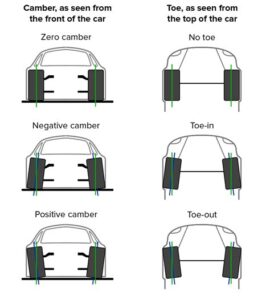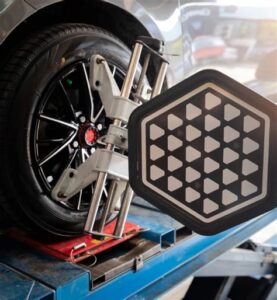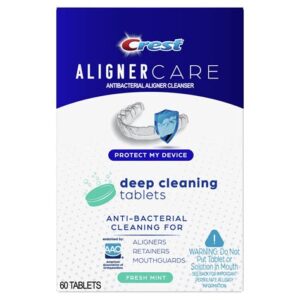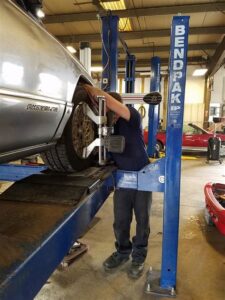Car Pulling After Alignment: Understanding the Issues and Solutions
Experiencing your vehicle pulling to one side after a recent alignment can be frustrating and concerning. Ensuring that your car’s wheels are properly aligned is crucial for optimal handling, tire wear, and safety. However, factors such as uneven tire pressure, suspension problems, or even poor quality alignment can lead to persistent pulling issues. In this article, we will explore the common causes of car pulling after an alignment, guide you on how to diagnose these problems effectively, and provide actionable steps to correct them. We’ll also highlight the importance of checking tire pressure and when it’s time to consult a professional. Understanding these aspects will not only enhance your driving experience but also extend the life of your vehicle. Let’s delve deeper into the solutions that can get you back on a straight path.
Common Causes Of Car Pulling After Alignment
Experiencing car pulling after an alignment can be frustrating and potentially dangerous. There are several common causes that may lead to this issue:
- Improper Wheel Alignment: Even slight inaccuracies during the alignment process can result in car pulling to one side. Ensuring precise measurements is crucial.
- Tire Wear: Uneven or excessive tire wear can cause a vehicle to pull. If the tires are not evenly worn, it may lead to varied traction on the road.
- Unequal Tire Pressure: Variations in tire pressure can dramatically influence how a car drives. If one side has lower pressure, it may create a pull in that direction.
- Suspension Issues: Worn out or damaged suspension components can affect how the vehicle handles and may cause car pulling.
- Brake Problems: If the brakes on one side are dragging due to issues like a stuck caliper, it can also lead to car pulling during driving.
- Road Conditions: Sometimes, the surrounding environment can impact your vehicle, such as driving on sloped surfaces or uneven roads.
Identifying the exact cause of car pulling after alignment is key to addressing the problem effectively and ensuring a safe driving experience.
How To Diagnose Car Pulling Issues Effectively
Diagnosing car pulling issues requires a systematic approach to identify the underlying problems. Here are some effective steps to help you pinpoint the cause:
By following these diagnostic steps, you can effectively narrow down the reasons for your car pulling and take the necessary actions to rectify the problem.
Steps To Correct Car Pulling After Alignment
If your vehicle is experiencing car pulling after an alignment, it’s important to address the issue promptly to ensure your safety and driving comfort. Here are some steps you can take to correct this problem:
- Check Tire Pressure: Begin by inspecting the tire pressure on all four tires. Make sure they are inflated to the manufacturer’s recommended levels. Uneven tire pressure can cause car pulling.
- Inspect Tires for Wear: Examine your tires for any signs of uneven wear, which could indicate alignment issues that were not addressed during the last procedure. Replace tires that show significant wear.
- Re-check Wheel Alignment: Even if your vehicle was aligned recently, it might be worth rechecking. Misalignment can occur due to various factors, and sometimes, the initial alignment might not have been accurate.
- Evaluate Suspension Components: Inspect your vehicle’s suspension parts, including shocks, struts, and control arms. Worn components can lead to car pulling issues and may require replacement.
- Check for Brake Problems: Ensure that the braking system is functioning correctly. Sticking brake calipers or uneven braking force can cause the vehicle to pull to one side.
- Perform a Test Drive: After making any adjustments or repairs, take your vehicle for a test drive. Pay attention to how the car handles and whether car pulling persists.
If the problem continues after completing these steps, it may be time to consult a professional mechanic for a thorough inspection. They can provide a more in-depth evaluation and help you find a lasting solution to your vehicle’s car pulling issues.
The Impact Of Tire Pressure On Car Pulling
The influence of tire pressure on car pulling cannot be overstated. Proper tire pressure is essential for maintaining vehicle stability and ensuring an even distribution of weight across all four tires. When the tire pressure is uneven, it can lead to a host of handling issues, including the frustrating phenomenon of car pulling.
Here are some key points regarding tire pressure and its effect on car pulling:
- Low tire pressure can cause excessive flex in the tire sidewalls, resulting in decreased vehicle control and a tendency to pull to one side.
- Overinflated tires can lead to a harsher ride and less contact with the road surface, which could also contribute to car pulling.
- Regularly checking and maintaining the recommended tire pressure for your vehicle is critical. This information can typically be found in the owner’s manual or on a sticker located inside the driver’s side door frame.
- Uneven tire wear can also be a sign of improper tire pressure, and it is vital to address this before it causes further alignment issues.
By ensuring that your tire pressure is within the manufacturer’s specifications, you can significantly reduce the chances of car pulling and enhance your vehicle’s overall performance.
When To Seek Professional Help For Car Pulling
If your vehicle is experiencing car pulling issues after an alignment, it’s essential to determine when to seek professional help. While some minor adjustments can be made at home, there are specific scenarios where a visit to a mechanic is necessary.
Here are key points to consider:
- Persistent Pulling: If your car continues to pull to one side despite having the alignment adjusted, it may indicate underlying issues that require professional diagnosis.
- Uneven Tire Wear: Keep an eye on your tire condition. If you notice uneven wear patterns, it’s a clear sign that your alignment or other components such as suspension parts may need expert attention.
- Steering Wheel Off-Center: If your steering wheel is not centered when driving straight, this could signify a misalignment or other related issues that should be addressed by a professional.
- Vibration or Noise: Any strange vibrations or noises while driving can indicate more severe problems. These symptoms often necessitate a professional inspection to pinpoint the exact cause.
- Braking Problems: If pulling occurs while braking, it could be a sign that brake components are malfunctioning, which requires immediate attention from a mechanic.
If you find yourself dealing with persistent or concerning symptoms related to car pulling, reaching out to a certified mechanic will ensure that you address the issue safely and effectively, helping you maintain optimal vehicle performance and safety on the road.
Frequently Asked Questions
What does it mean when a car pulls to one side after an alignment?
When a car pulls to one side post-alignment, it usually indicates that the wheel alignment settings are not adjusted correctly or that other components such as tires and suspension may be causing the issue.
Is it normal for my car to pull after a wheel alignment?
No, it is not normal. A properly performed wheel alignment should correct any pulling issues. If your car continues to pull, it’s advisable to have it checked.
What could cause my car to pull even after alignment?
Factors that could cause pulling after alignment include uneven tire pressure, worn-out or damaged suspension components, bad tires, or even road conditions.
How can I tell if my tires are the issue?
Check for uneven wear patterns on your tires, ensure all tires are properly inflated, and look for any visible damage such as bulges or tears.
Should I take my car back to the shop if it pulls after alignment?
Yes, you should return to the shop where the alignment was done. They can reassess the situation and ensure everything is in order.
Can misaligned suspension cause my car to pull?
Absolutely. Misaligned suspension components can lead to improper wheel angles, contributing to pulling or drifting issues.
How often should I get my car aligned to prevent pulling issues?
It’s recommended to have your car’s alignment checked at least once a year or whenever you notice any pulling, or after significant impacts like hitting a pothole.





